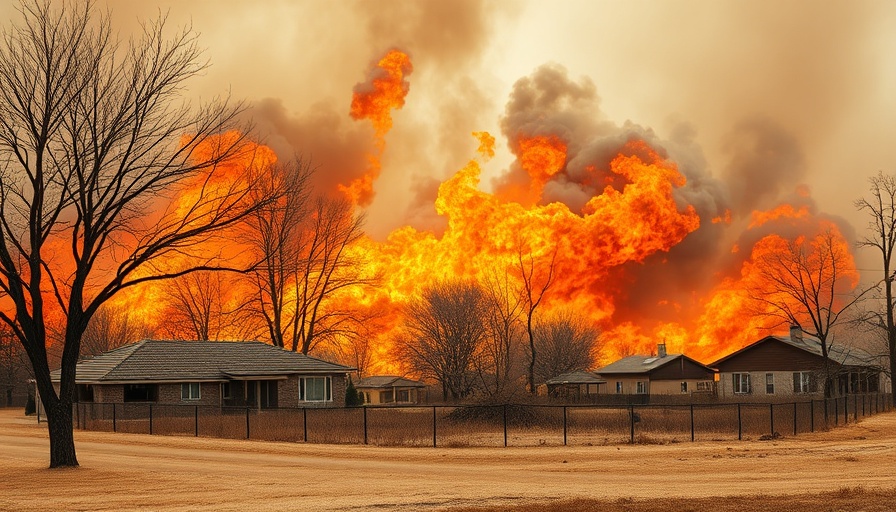
Healing After the Flames: Community Resilience Following the Duke Fire
The Duke Fire, which ravaged the tranquil communities of Bexar and Atascosa counties in Texas, has left a profound impact on many families. Now that the fire is 100% contained, a palpable wave of solidarity is washing over the affected neighborhoods. Residents are banding together, not only to grieve their losses but also to find ways to heal and rebuild their community. This spirit of unity is a reflection of the strength that often emerges in the face of adversity.
Understanding the Scale of Devastation
Reports indicate that the Duke Fire consumed 45 properties, including 13 homes and 32 outbuildings. The force of nature that caused such destruction was primarily fueled by strong winds and dry vegetation—conditions that have created a perfect storm for wildfires in recent years. This incident is a part of a pattern seen in various regions across the United States that have suffered devastating wildfires due to climate change and human development.
Lessons from Other Communities
As observed in other disaster-stricken areas, the aftermath of such tragedies often sheds light on the resilience inherent in human communities. For instance, after Hurricane Helene struck Western North Carolina, residents similarly came together to aid one another, a demonstration of community solidarity that transcends individual loss. This parallel emphasizes that while the material scars may take years to heal, the emotional and social fabric of a community can emerge stronger.
Emotional Healing and Support Networks
Emotional recovery is as critical as rebuilding physical structures. Neighbors like Cathy Davis, who witnessed the fire first-hand, not only experienced a loss of property but also the sense of security that comes with home. To navigate this trauma, communities nationwide have been utilizing various support systems, which include counseling services, peer support groups, and community meetings aimed at fostering a healing environment. The psychological toll of such disasters can linger; hence, enhancing mental health resources becomes crucial.
Looking Ahead: Strategies for Resilience
As families begin to rebuild, it’s vital to consider sustainable practices that can increase resilience against future disasters. Experts suggest that communities focus on implementing better fire management practices and infrastructure improvements, such as firebreaks and using fire-resistant materials in construction. This forward-thinking approach can help mitigate the risk of future fires while honoring the memories of those who lost their homes in the Duke Fire.
Community Gathering and Long-Term Impact
The local response to the Duke Fire highlights a fundamental truth about community dynamics in the face of catastrophe: it brings people together. As residents come together to help one another, they are also starting to work on long-term recovery plans. This includes discussions around policy changes that will help make neighborhoods safer and better prepared for future threats.
Conclusion: The Path to Recovery
Ultimately, the aftermath of the Duke Fire serves as a reminder of the resilience of the human spirit and the importance of community solidarity in times of trouble. While the physical losses are considerable, they also provide an opportunity to rethink and redesign community engagement and disaster preparedness. As the residents of Bexar and Atascosa counties begin to recover, they stand not alone but united, drawing strength from one another.
To support the rebuilding efforts, residents are encouraged to actively participate in local initiatives and engage with local leaders to ensure their voices are heard in recovery plans. For those wishing to assist, donations to local organizations dedicated to providing relief can foster healing and demonstrate the power of community.
 Add Element
Add Element  Add Row
Add Row 



 Add Row
Add Row  Add
Add 


Write A Comment